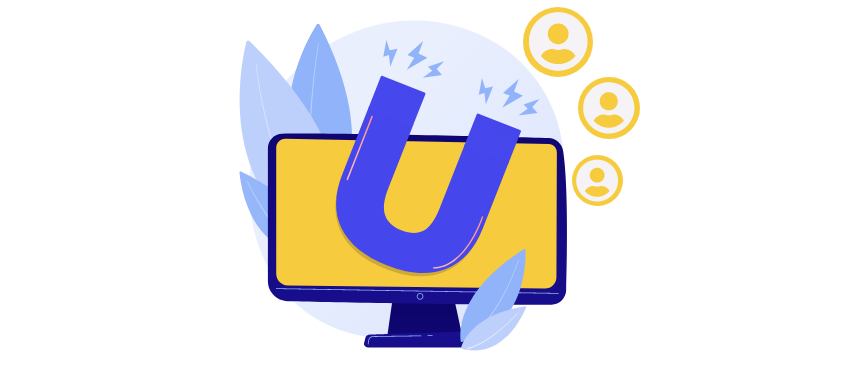Top 7 reasons for customer churn you need to know

Top 7 reasons for customer churn you need to know
Reducing customer churn always leads to:
- Increase in revenue
- High referrals
- Increase in upsell revenue
- More customer acquisition channels because of high LTV
It’s not easy to reduce customer churn. The big part of customer churn always involves innovating and improving your product/service. This is similar to the rising tides approach where the companies should slowly but continuously reduce churn over time.
Some of these churns can be controlled while some of the problems are out of the scope.
7 reasons for customer churn which can be solved by taking some necessary steps.
1) Bad customer service
“Bad Customer Service” is one of the biggest reasons where customers leave a service or cancel their subscription. According to research from the U.S. Small Business Administration and the U.S. Chamber of Commerce, 68% of customers leave a company because of the treatment that they receive from the business. Most of these customers don’t leave quietly, the unhappy customers often tell between 9-15 people about their experience. This means that bad customer service actively hurts your company.
Prompt handling of complaints and polite, friendly communication are the signs of good customer service. Connecting with your customers at the emotional level and making every customer feel like they are important is what good customer service is. Users just don’t want to buy the products and leave, they also want to feel engaged and appreciated.
How can you reduce this customer churn? The answer is personalization. Customized messages and content make customers feel like that you are paying attention to them, want to know more, and are genuinely interested in them. This always works and gets customers to engage with your brand in return.
2) Not enough value
The value should not be considered equal to the price. It contains much more than that. Value in general describes the entire customer experience. To get a better customer experience, 55% of the customers are willing to pay extra instead of choosing a cheap brand.
You can provide value to your customers by personalizing incentives, as one thing which is important to one customer is not necessary will be important for another one. It all comes to understanding the likes and dislikes of each customer. Giving customized service to each customer is considered a good value.
3) Poor quality communications
Not engaging with your customers and giving them vague replies can also be a cause of customer churn. Over 35% of customers unsubscribe from emails because they are sent too often. Distributing the emails that are not relevant to the customers annoys them and puts you in the position where your company looks clueless and doesn’t know the things they are doing.
To avoid this issue, it’s best not to spam your customers. Make sure that each message you send is clear and serves a purpose. These purposes can be a welcome message to create brand awareness or sharing an article with them that provides value.
4) No brand loyalty
Customers leave a company, not because of the product but because there’s no commitment with the company. It mostly happens to the service-related complaints. The reason is there is no brand loyalty to differentiate between your competitors– why you are better than your competitors. When this happens, then price becomes the deciding factor whether to use your service or not.
To prevent this kind of customer churn, you will have to build a brand loyal customer base. Brand loyal customers see more commitment towards your brand. Customers became loyal to your brand based on their understanding of your company rather than prices or promotions. These kinds of customers stay with your brand even if the prices go up and also encourage their friends and family to use your products.
5) Lack of (or Zero) Engagement
Metasaas is a company that identifies unused, underused, or abandoned SAAS licenses. The company found out that about 31% of SAAS licenses go unused.
It’s always a hefty task to manage all of your software licenses. It’s possible that some of the recurring revenue you’re earning is coming because someone forgot to cancel it. Or your product is not being used frequently, it can also be the case where your customers aren’t using the full feature set.
All these things are the cause of low engagement which always indicated a strong leading indicator of churn. To identify this problem, first, you need to find out the track engagement. For most products, this would mean, in-app analytics, while other more ”˜behind the scenes’ products might require conducting customer surveys. If you like, you can start from Net Promoter Score®.
And if you have the sample size and analytics resources, you may be able to correlate engagement numbers with the churn. You may be able to come up with a ”˜borderline’ where engagement is there but goes beyond a certain point.
Intercom folks see the ”˜borderline’ as: “Once you come across with your ”˜borderline’ metric, you should set up monitoring so that your customer success team is quickly notified when a customer approaches that line. One of the customer success team members should proactively reach out and try to understand why the customer is not engaged and what can be done to fix the problem.”
6) Poor Product-Market Fit
Attracting the users that are not a right fit for your product or who don’t require your product can lead to zero engagement with a high churn rate. It’s essential to attract only those users or customers who can benefit from your product. Otherwise, it will hurt your company’s reputation, and a lot of money and time is wasted where it can be utilized on educating a client that can use your product.
To reduce this customer churn, you and your team should constantly remain in touch with your users along with your customer success, sales, and marketing teams. When it’s found that the products are being sold to the wrong customers, the leaders of each team should diagnose the issue and work on mending the problem. This can lead to adjusting the company’s standards for qualifying a lead, and ensuring that the lead has the needs that you can solve. Sometimes, just doing slight tweaking in the onboarding process or product can make this segment of customers successful.
7) Difficult User Experience
It’s great that your product has the core functionality and provides a positive ROI, but is your product easy to use?
Some enterprise software platforms might be able to get away with bad user experience design. Still, usability and easy to use products only win customer’s hearts. When software becoming more user-centric, and users have high expectations from the company, providing a good customer experience is more necessary. Top companies like Microsoft scrambling to make their messaging platform as great as Slack.
A poor user experience grates on end-users over time. These end-users complain to there, who complain to their bosses until the matter goes on to higher-ups who eventually get sick of it and switch over to a new platform.
To fix poor user experience, the customer success and product teams must be in sync. Regular meetings like monthly or quarterly between leaders and contributors from both teams should meet and review the details related to usability.
The customer success team should come prepared with real-life examples of how this impacts customers, and how often tickets see created as a result of the issue. This way, the customer success team can show the effect of usability issues that affects the overall experience.










